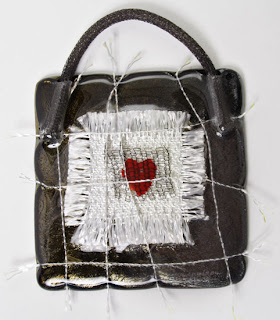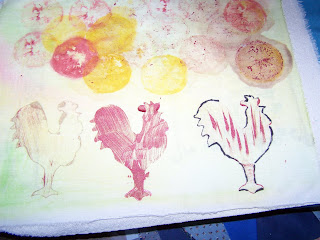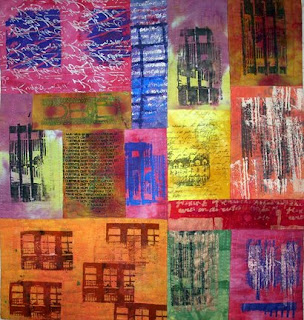
NOTE: The glitches are fixed on the Artful Home site. -- Dawn
The deadline draws near for participation in the fundraiser for Anna Millea who faces a barrage of chemo in her second round with cancer. She shouldn't have to face this alone nor without insurance.
Alone she is not with all of her friends and fellow artists.
Insurance we can't do much about right now, but I hope everyone will find a way to contribute and save this one woman's life. Below you can find out what you can do. -- Dawn
With just under two weeks until the online deadline for “Hearts for Anna” submissions, the first pieces are rolling in to Artful Home. I have to admit that I’m not the only one around our office who gets rather teary as we see all these beautiful works! We have open offices, so it is easy to hear the squeals of delight when yet another package arrives.
 The work is, indeed, in every medium. This lovely fiber piece, “Morning Song” by Virginia Spiegel , is a beautiful miniature example of the artist’s hand. The lyrical quality combined with the strong graphic composition is a signature of Virginia’s, and is very moving.
The work is, indeed, in every medium. This lovely fiber piece, “Morning Song” by Virginia Spiegel , is a beautiful miniature example of the artist’s hand. The lyrical quality combined with the strong graphic composition is a signature of Virginia’s, and is very moving. In a completely different medium, but with very similar sentiment are “Encased Heart” by Nina Cambron and “Red Heart Paperweight” by acclaimed glass artist, Mark Rosenbaum. On our website, Nina is known for her painterly fused glass art clocks. In miniature, she captures the same beauty and exuberance in glass that has real textile sensibilities. Mark’s New Orleans locale clearly influences the spirit in his work.
There is still plenty of time to consider contributing a piece to this event, as the deadline for images is August 7. “Hearts for Anna” t akes place online August 12-16, with all proceeds going to artist, Anna Millea, to help with her medical bills as she fights breast cancer alone, having been deemed uninsurable. More details here.
akes place online August 12-16, with all proceeds going to artist, Anna Millea, to help with her medical bills as she fights breast cancer alone, having been deemed uninsurable. More details here.
Check out a previous blog concerning the fundraiser for Anna.
























